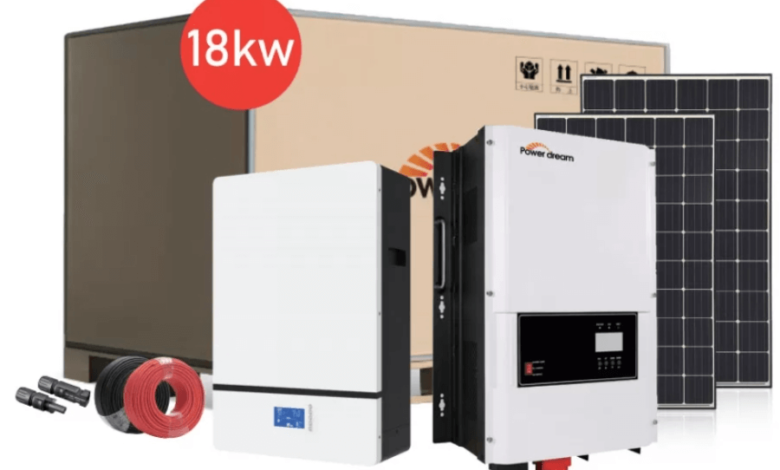How to Protect Your Off Grid Solar Power System from Lightning Strike?

Lightning is a significant threat to any electrical device, and off grid solar power system are particularly vulnerable to lightning strikes because they have rooftop solar panels and extensive wiring, and they are often located in remote areas with little access to the grid. A direct lightning strike or an induced surge can damage solar panels, inverters, charge controllers, batteries, and sensitive electronics, jeopardizing years of investment and causing critical power outages. Drawing on BARANA’s field research and industry best practices, each section of this guide focuses on practical, reliable measures—grounding, surge protectors, lightning rods, cabling, and maintenance procedures—that form a comprehensive lightning protection solution.
Implementing Robust Grounding for off grid solar power systems
Proper grounding is the foundation of any lightning protection plan for off grid solar power systems. A low-impedance ground connection safely disperses lightning energy into the soil, minimizing potential differences between equipment. Use a copper-clad ground rod at least 8 feet long, driven into moist soil near the array and system master equipment. Connect all metal parts to a single ground bus, then connect to the ground rod with heavy-gauge copper conductors. Ensure continuity using exothermic welding or stainless steel clamps suitable for outdoor use. Test ground resistance regularly using the fall-of-potential method. When integrated into an off grid solar power system, this robust grounding network significantly reduces the risk of equipment damage from surges caused by direct strikes and nearby lightning strikes.
Install DC and AC surge protection devices.
Surge protectors are essential to protect sensitive electronic equipment in off grid solar power systems from transient overvoltages caused by lightning strikes. On the DC side, install a Type 1 or Type 2 surge protector between the positive and negative conductors of the PV array and between each conductor and ground. These devices clamp high-voltage spikes and prevent them from reaching the charge controller. On the AC side, use a Type 2 SPD to intercept surges before they damage the load or line. For more robust protection, consider cascading SPDs: install a Type 1 device at the service entrance and a Type 2 device at the sub-distribution board. Ensure all SPDs share the same ground bus to avoid potential differences that could bypass the protection devices. Correctly specified and installed SPDs can extend the life of inverters, controllers, and home electronics in off-grid environments.
Integrate Lightning Rods for Direct Lightning Protection
When your off grid solar power system sits in an exposed location (such as a mountaintop, open field, or coastal area), you should install lightning rods to provide a better path for direct lightning strikes. Place lightning rods at the highest point of the solar panel rack and nearby structures, ensuring they are at least 3 feet above the edge of any panels.
Connect these lightning rods to the ground bus using low-impedance down conductors of at least 10 AWG copper wire, which should be straight, short, and without sharp bends. Using the Faraday cage principle, a network of lightning rods and conductors surrounds sensitive equipment, effectively diverting lightning current away from the electronic equipment of the off-grid solar power generation system. At the same time, combined with a properly designed lightning rod system, the possibility of catastrophic damage to panels or inverters due to direct lightning strikes can be reduced by up to 80%.
Off grid Solar Power Systems: Optimize Cable Routing and Conduit Shielding
Lightning-induced surges often enter off grid solar power systems through long cable runs that act as antennas. DC and AC cables should be routed in metal conduits to reduce this risk and provide electromagnetic shielding. DC and AC conduits should be physically separated by at least 12 inches to prevent cross-coupling of noise and surges. Silicone seals should avoid moisture and debris from entering when conduits transition outdoors. Consider using semi-rigid coaxial cable assemblies designed to resist surges for critical lines. Inside the system, bundle wires into twisted pairs or quads to reduce loop area and electromagnetic induction. By optimizing cable routing and conduit shielding, the vulnerability of the harness to voltage spikes caused by lightning strikes can be reduced.
Adopt a regular inspection and maintenance protocol.
Even the most sophisticated lightning protection measures will fail over time if improperly maintained. Inspect technicians should inspect all ground connections, surge protectors, and lightning rods quarterly for off grid solar power systems. Check clips for corrosion, loose terminals, and physical damage to the SPD. Test SPD modules to manufacturer specifications—many modules require indicator lights or replaceable cartridges to confirm functionality. Check ground rod resistance annually; seasonal soil moisture changes can push resistance above safe thresholds. Check conduit seals and cable integrity, especially after severe weather events. Also, record all maintenance activities and SPD replacements in system logs. By proactively maintaining your lightning protection infrastructure, you can ensure that each component functions when needed most.
See also Is Muraba Veil the Best Place to Live in Dubai? A Comprehensive Guide
Implement a comprehensive lightning protection strategy.
Protecting off grid solar power systems from lightning strikes requires a multi-layered approach: solid grounding, surge protectors, lightning rods, shielded cables, thorough maintenance, system redundancy, and emergency procedures. By combining these best practices, off-grid users can secure their investment, maintain continuous power, and extend the life of their equipment, even in areas prone to lightning strikes.



